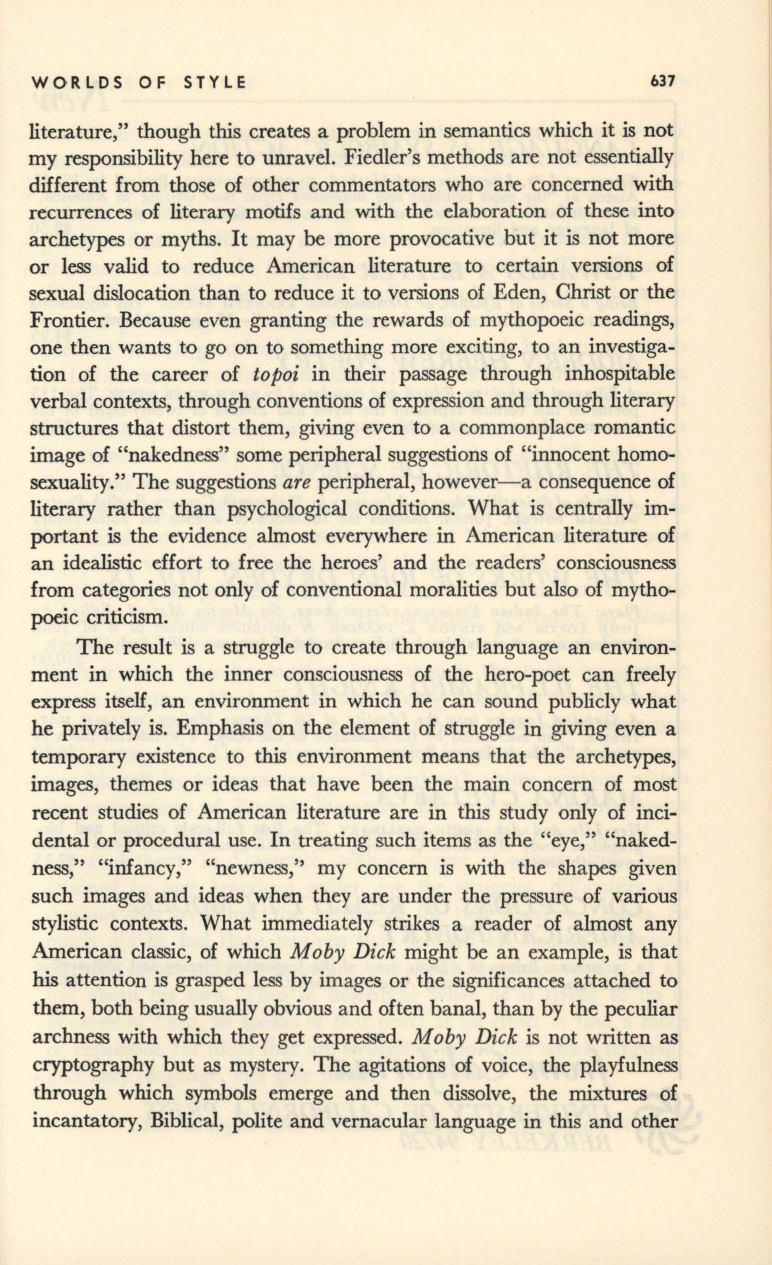
WORLDS OF STYLE
637
literature," though this creates a problem in semantics which it is not
my responsibility here to unravel. Fiedler's methods are not essentially
different from those of other commentators who are concerned with
recurrences of literary motifs and with the elaboration of these into
archetypes or myths. It may
be
more provocative but it is not more
or less valid to reduce American literature to certain versions of
sexual dislocation than to reduce it to versions of Eden, Christ or the
Frontier. Because even granting the rewards of mythopoeic readings,
one then wants to go on to something more exciting, to an investiga–
tion of the career of
topoi
in their passage through inhospitable
verbal contexts, through conventions of expression and through literary
structures that distort them, giving even to a commonplace romantic
image of "nakedness" some peripheral suggestions of "innocent homo–
sexuality." The suggestions
are
peripheral, however-a consequence of
literary rather than psychological conditions. What is centrally im–
portant is the evidence almost everywhere in American literature of
an idealistic effort to free the heroes' and the readers' consciousness
from categories not only of conventional moralities but also of mytho–
poeic criticism.
The result is a struggle to create through language an environ–
ment in which the inner consciousness of the hero-poet can freely
express itself, an environment in which he can sound publicly what
he privately is. Emphasis on the element of struggle in giving even a
temporary existence to
this
environment means that the archetypes,
images, themes or ideas that have been the main concern of most
recent studies of American literature are in this study only of inci–
dental or procedural use. In treating such items as the "eye," "naked–
ness," "infancy," "newness," my concern is with the shapes given
such images and ideas when they are under the pressure of various
stylistic contexts. What immediately strikes a reader of almost any
American classic, of which
M oby Dick
might be an example, is that
his
attention is grasped less by images or the significances attached to
them, both being usually obvious and often banal, than by the peculiar
archness with which they get expressed.
M oby Dick
is not written as
cryptography but as mystery. The agitations of voice, the playfulness
through which symbols emerge and then dissolve, the mixtures of
incantatory, Biblical, polite and vernacular language in this and other


